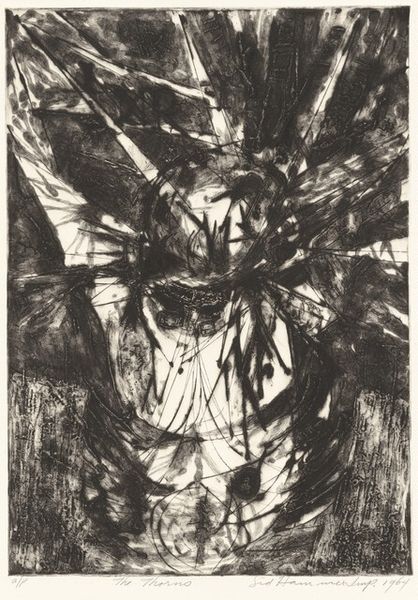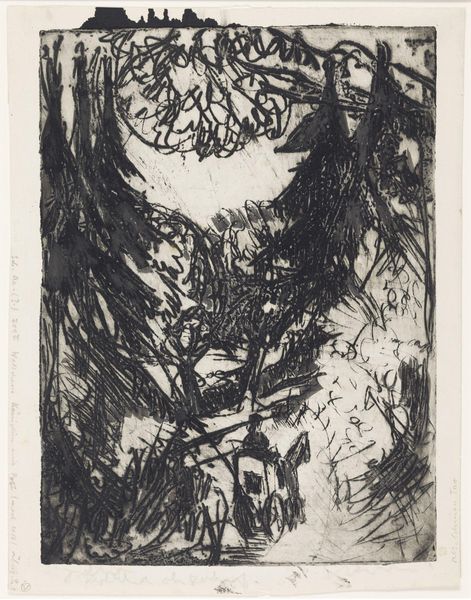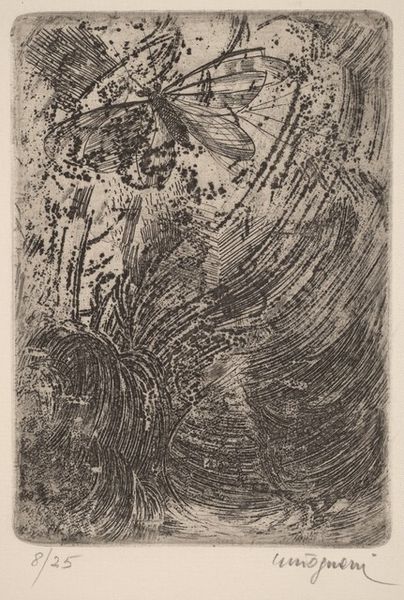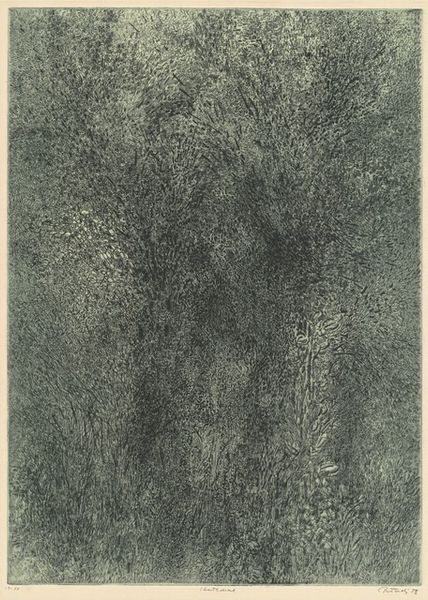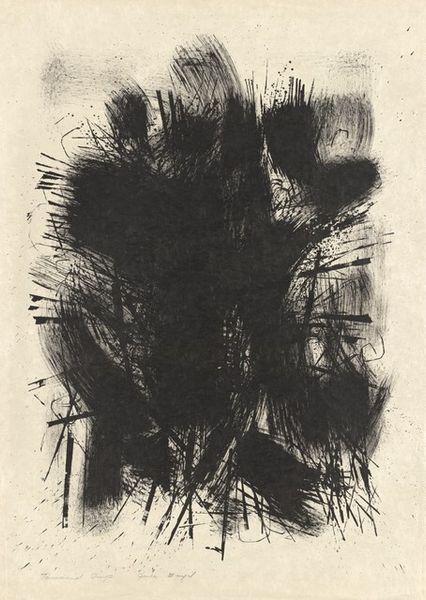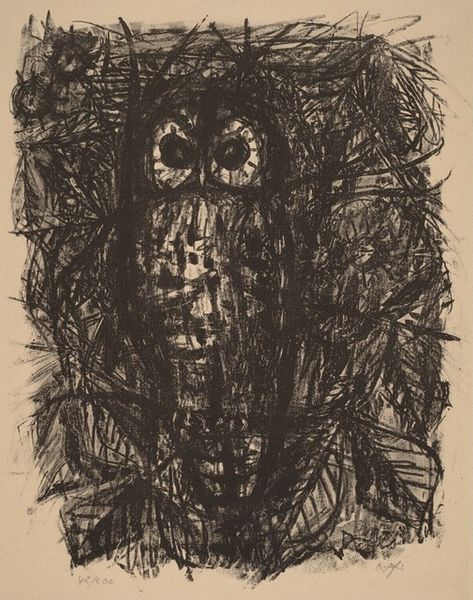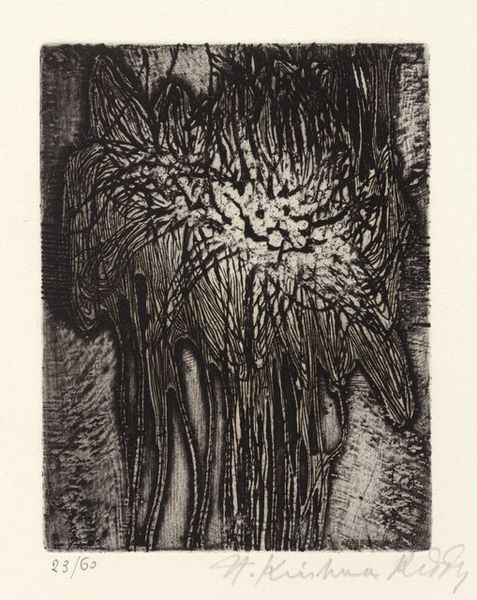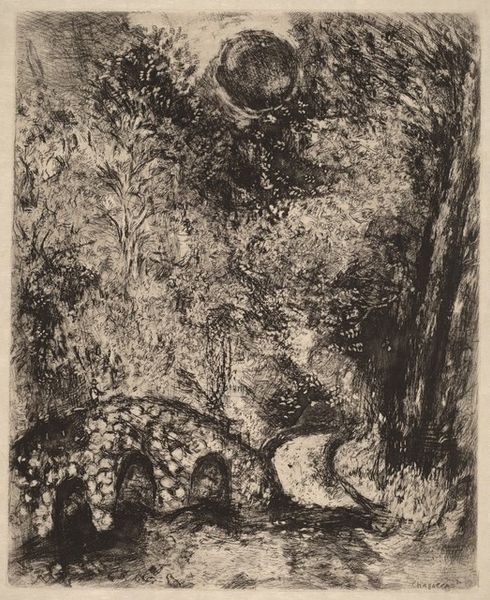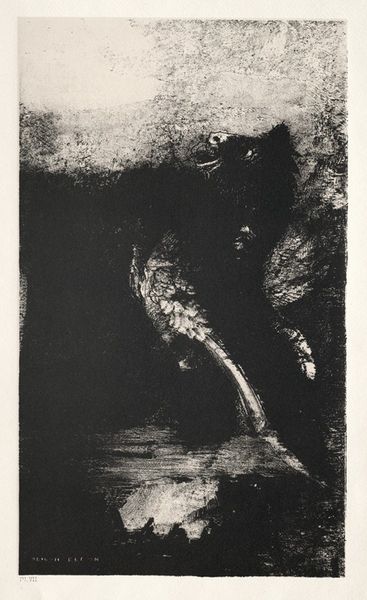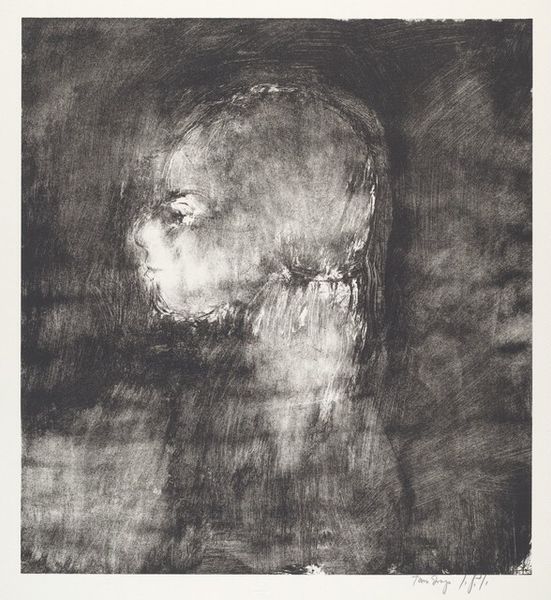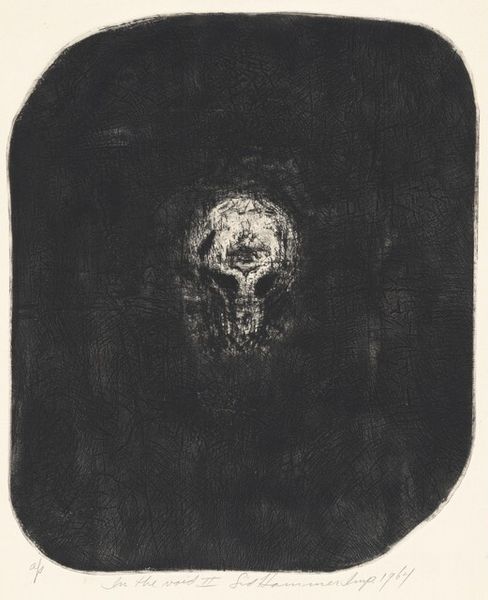
graphic-art, print
#
graphic-art
# print
#
figuration
#
abstraction
Dimensions: plate: 50.8 × 40.01 cm (20 × 15 3/4 in.) sheet: 75.88 × 56.2 cm (29 7/8 × 22 1/8 in.)
Copyright: National Gallery of Art: CC0 1.0
Editor: Here we have Sid Hammer's "In the Void I," a print from 1964. There’s something quite unsettling about the image. The face emerging from the darkness, almost dissolving... what strikes you most about this piece? Curator: I immediately see the labor and materiality embedded within the printmaking process itself. Consider the etchant eating away at the metal plate, controlled yet aleatory; the wiping of the ink, each action embedding traces of the hand; then, the forceful impression onto the paper. It is about transforming and marking a surface through mechanical and chemical actions. The "void" isn't just a subject, but a space of active making, of production. Editor: So you see the void not as emptiness, but as a site of…work? Is the choice of printmaking important, then? Curator: Precisely. This isn't about a singular artistic genius. Printmaking implicates process, often collaboration, and circulation—it disrupts the myth of the unique art object. "In the Void I" is reproducible; it invites multiples, versions, reaching broader audiences. Hammer, here, potentially comments on the artistic and societal systems that govern artistic value. Editor: I never thought about the reproducible aspect, but you're right. There’s also a real contrast in texture: the smooth paper and the rough, almost violent marks of the etchant. Curator: Look closer; what kind of labor is evident in that surface? Is it clean and precise, or aggressive, messy, and experimental? Hammer pushes the limits of the medium. The textures are byproducts of intense material engagement, indicative of pushing at artistic boundaries within existing technological methods of production. The image itself is secondary. Editor: I guess I had fixated on the image itself. Now I realize that it is about the work that went into making it as an object and disseminating it within culture, it really adds another dimension to my appreciation. Curator: And this approach allows us to consider broader questions: who gets to make art, how is it valued, and who does it reach?
Comments
No comments
Be the first to comment and join the conversation on the ultimate creative platform.
